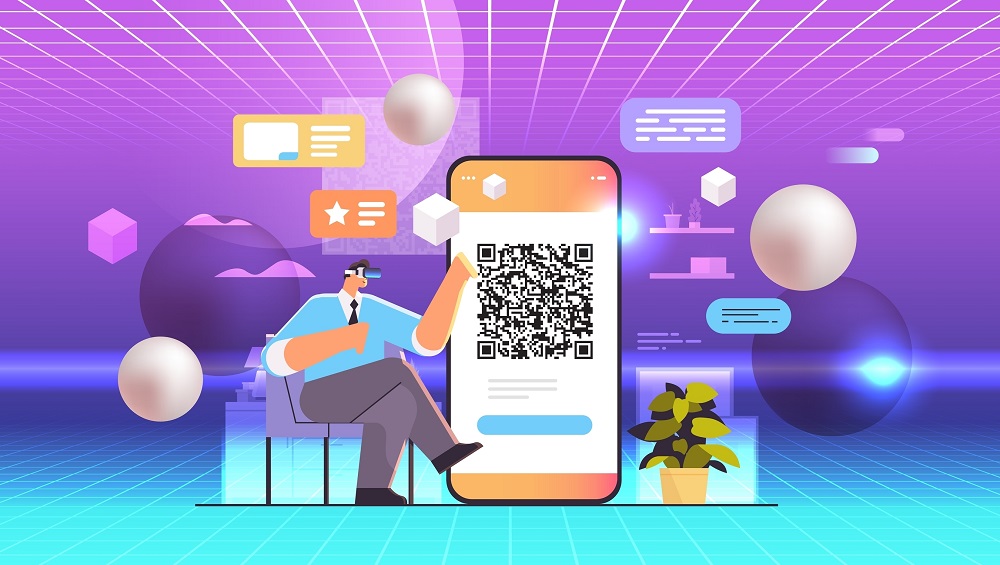In the rapidly evolving landscape of technology, the fusion of Quick Response (QR) codes and Augmented Reality (AR) has created a dynamic and powerful synergy. While QR codes provide a seamless bridge between the physical and digital worlds, augmented reality enhances the user experience by overlaying digital content onto the real world. In this article, we explore the symbiotic relationship between QR codes and augmented reality, highlighting their combined potential to revolutionize various industries and create immersive, interactive experiences.
1. QR Codes as Gateways to Augmented Reality:
QR codes act as gateways that initiate augmented reality experiences. When users scan a QR code with their smartphones, it triggers the launch of an AR application or content. This seamless integration enables quick and direct access to augmented reality features, eliminating the need for users to navigate through multiple steps to engage with digital overlays.
2. Interactive Marketing Campaigns:
QR codes and augmented reality are reshaping marketing campaigns, providing a new dimension of interactivity. Marketers use QR codes on print materials, product packaging, or promotional items. When scanned, these QR codes unlock augmented reality experiences, such as interactive advertisements, 3D product demonstrations, or virtual try-on sessions, creating engaging and memorable interactions with consumers.
3. Product Visualization and Virtual Try-Ons:
Retailers leverage the combination of QR codes and augmented reality to enhance the shopping experience. QR codes on product labels or displays can direct customers to virtual try-on experiences or interactive visualizations. This enables users to see how products fit or look in their own space before making a purchase decision.
4. Educational and Training Applications:
In educational settings, QR codes paired with augmented reality offer innovative learning experiences. Textbooks, posters, or learning materials embedded with QR codes can unlock AR content, providing students with interactive visualizations, 3D models, or immersive simulations that complement their lessons and make learning more engaging.
5. Enhanced Tourism Experiences:
The tourism industry benefits from the combination of QR codes and augmented reality to provide enriched travel experiences. QR codes at tourist attractions, historical sites, or museum exhibits can trigger AR guides, offering visitors interactive narratives, historical reconstructions, or virtual guides that enhance their understanding and engagement.
6. Event Experiences and Exhibitions:
In events and exhibitions, QR codes linked to augmented reality content amplify the impact of displays and booths. Attendees scanning QR codes can access immersive experiences, interactive demonstrations, or additional information about products and services. This dynamic approach helps organizations leave a lasting impression and effectively communicate their messages.
7. Navigation and Wayfinding:
QR codes and augmented reality collaborate to simplify navigation and wayfinding. QR codes in public spaces or transportation hubs can provide users with AR-enhanced navigation guides. By scanning the QR code, users see digital overlays on their smartphones, helping them navigate complex environments, find points of interest, or receive real-time information.
8. Gamification and Interactive Experiences:
The combination of QR codes and augmented reality is a powerful tool for gamification and interactive experiences. Scanning QR codes can unlock virtual challenges, scavenger hunts, or augmented reality games that blend the physical and digital realms, fostering engagement and participation.
Conclusion:
The synergy between QR codes and augmented reality represents a transformative force in various industries, creating immersive and interactive experiences for users. Whether used in marketing, education, retail, tourism, or events, the powerful duo of QR codes and augmented reality has the potential to redefine how individuals engage with the world around them. As technology continues to evolve, the integration of these two technologies is likely to lead to even more innovative applications and experiences, unlocking new possibilities for businesses and users alike.

